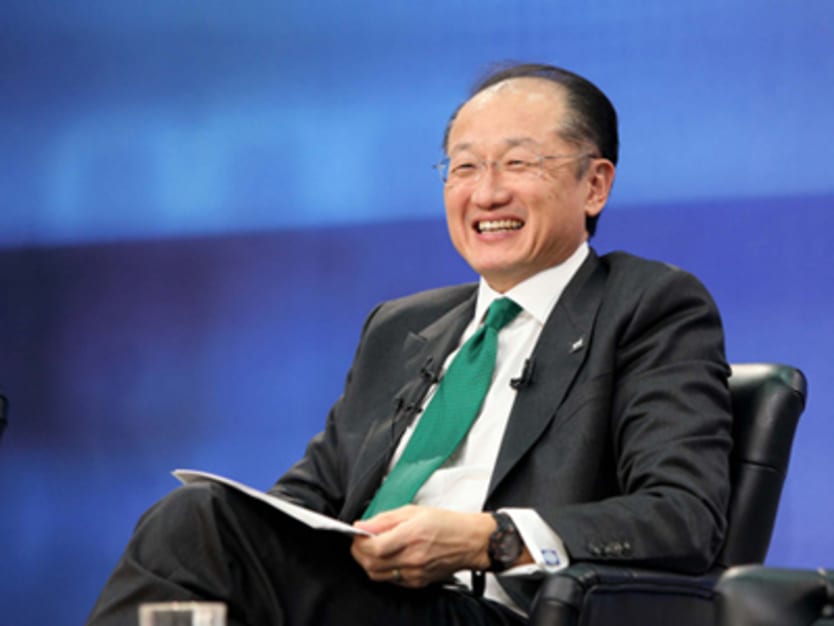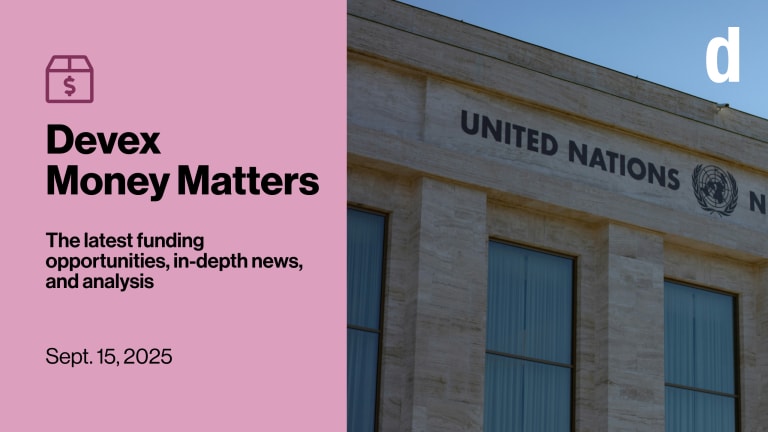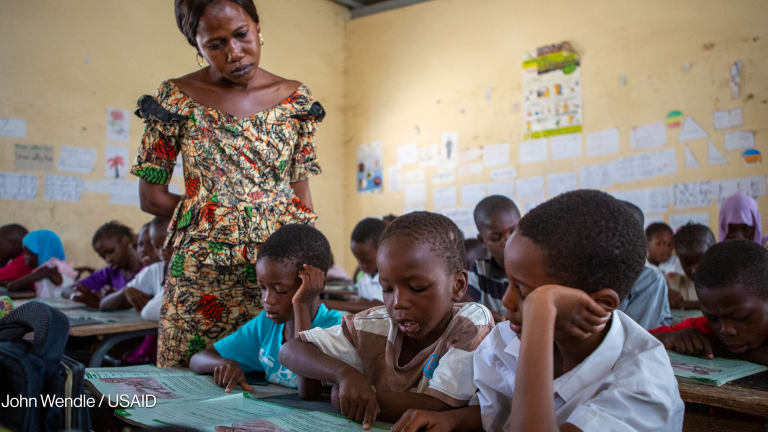
After the announcement of a record fundraising round for the International Development Association in December, the World Bank can celebrate the news that Congress has made good on the U.S. pledge, setting aside more than $1.3 billion for the bank’s fund for the poorest — the first installment of a contribution that should add up to more than $4 billion for IDA over the next three years.
“We are very pleased and relieved, about the result,” Joachim Von Amsberg, World Bank’s vice president for concessional finance, said on Thursday during a panel discussion at the Center for Strategic and International Studies in Washington, D.C. “Relieved, I would say, because 52 million is a lot of money, but it still meets only a fraction of what our client countries are demanding in terms of support from the World Bank.”
The U.S. contribution essentially maintains the level of funding it has provided in recent years — but the bank’s ability to maintain that funding in a tough budget environment is seen as a major coup.
Signed into law last week, the omnibus spending bill includes the annual installment of U.S. contributions for the various arms of the multilateral development banks, including the World Bank and regional lenders like the Inter-American Development Bank.
Overall funding for multilateral assistance totals more than $3 billion, with an increase of about three percent, according to data compiled by the U.S. Global Leadership Coalition.
Better than expected
In addition to the IDA contributions, the funding for the multilateral development banks includes $1.86 billion for the World Bank’s fund for middle-income countries, and $280 million for the group’s trust funds. The United States also allocated funds to regional development banks, including more than $108 million to the IDB, about $216 million to the Asian Development Bank and $208 million for the African Development Bank.
The funding for IDA was hashed out over the course of the year in conjunction with a policy framework that includes gender and conflict states as programming priorities. The approved policy framework hasn’t been released yet, but it will likely include important changes its funding formula for fragile states.
Sarah Aviel, the U.S. executive director to the bank said the policy framework was closely aligned with U.S. priorities — which contributed to the better-than-expected funding. In general, development banks were lucky to escape the political wrangling that resulted congress slashing U.S. contributions to the International Monetary Fund to zero.
The bill does include some limitations on the multilateral contributions, including voting instructions for the U.S. executive director and against funding for large hydropower projects. Still, the fact that IDA funding came out relatively unscathed in Congressional budget battles is a testament to the World Bank’s ability to demonstrate it is getting results with donor money.
Jim Kolbe, a former congressman and veteran of aid budget battles, said at the CSIS panel that IDA may have something else in its favor: anonymity.
“If you go up on Capitol Hill to the Congress and ask them what IDA is, probably 90 percent of you would look at you with a blank stare and say ‘I have no idea what you are talking about,’” Kolbe explained. “And therein may lie the success of IDA.”
Read more development aid news online, and subscribe to The Development Newswire to receive top international development headlines from the world’s leading donors, news sources and opinion leaders — emailed to you FREE every business day.








